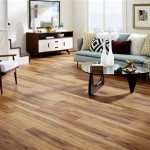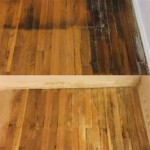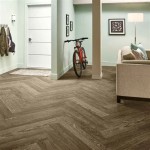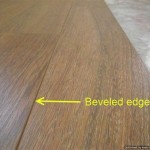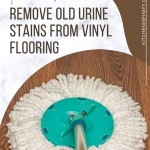How to Install Hardwood Floors on Particle Board
Installing hardwood floors adds value, beauty, and durability to a home. While a concrete subfloor is often preferred, installing hardwood over a particle board subfloor poses a unique set of challenges but is a feasible project with careful preparation and proper techniques. This article details the steps involved in successfully installing hardwood flooring over particle board, emphasizing best practices to achieve a long-lasting and aesthetically pleasing result.
Particle board, also known as chipboard, is a composite wood product manufactured from wood chips, sawmill shavings, or even sawdust, and a synthetic resin or other suitable binder, which is pressed and extruded. Its affordability and ease of cutting make it a common subfloor material, particularly in older homes. However, particle board is susceptible to moisture damage and can be less stable than plywood, requiring modifications to standard hardwood installation practices.
Before proceeding with the installation, a thorough assessment of the existing particle board subfloor is necessary. Any signs of water damage, swelling, softness, or delamination must be addressed. Replacing damaged sections with new particle board or, ideally, plywood is essential. Proper preparation is paramount to ensure the longevity and stability of the hardwood floor.
Assessing the Existing Particle Board Subfloor
The first and perhaps most vital step is a comprehensive inspection of the particle board subfloor. One must look for visible signs of water damage, such as staining, discoloration, or swelling. Using a moisture meter to check the moisture content of the particle board is highly recommended. A reading above 12% indicates excessive moisture that requires remediation before proceeding. Any areas of the subfloor that feel soft or spongy underfoot are likely compromised and should be marked for replacement.
Walk across the entire subfloor, paying attention to any areas that flex or squeak. These areas indicate loose or improperly secured sections of the particle board. Before installing the hardwood, such issues must be resolved. Loose sections can often be corrected by adding screws to re-secure them to the floor joists below. Squeaks may require additional shimming between the subfloor and the joists to eliminate movement.
Check the levelness of the subfloor using a long level or straightedge. Significant variations in height will create an uneven surface for the hardwood, leading to installation problems and potential issues with the finished floor. Minor imperfections can be addressed with leveling compound, but larger discrepancies may necessitate more extensive repairs or even subfloor replacement.
Consider the thickness of the particle board. Thinner particle board offers less support for the hardwood flooring and is more prone to flexing and movement. If the existing particle board is too thin (less than 3/4 inch), it may be advisable to install an additional layer of plywood over it to increase stability and improve fastener holding power. This also allows for the use of longer fasteners, which are crucial for securing the hardwood to the subfloor.
Finally, ensure that the particle board is properly attached to the floor joists. Use screws to secure any loose areas. The spacing of the screws should be consistent with the manufacturer's recommendations for the particle board thickness. In general, screws should be spaced no more than 6 inches apart along the edges and 12 inches apart in the field. Properly secured subfloor is essential to prevent movement, squeaking, and separation of the hardwood flooring.
Preparing the Particle Board for Hardwood Installation
Once the subfloor has been thoroughly inspected and any necessary repairs have been made, the next step is to prepare the surface for the hardwood installation. This involves cleaning, leveling, and potentially adding a vapor barrier to protect the hardwood from moisture. Proper preparation is crucial for ensuring that the hardwood floor is installed on a stable, level, and dry surface.
Begin by thoroughly cleaning the subfloor. Remove any debris, dirt, dust, and old adhesives. Sweep or vacuum the entire area to ensure that the surface is free of loose particles. For stubborn adhesives, use a scraper or adhesive remover, following the manufacturer's instructions carefully. A clean surface will allow for better adhesion of the underlayment or vapor barrier, if one is used.
Leveling the subfloor is critical to ensure a smooth and uniform surface for the hardwood. Use a self-leveling compound to fill in any low spots or uneven areas. Before applying the compound, prime the subfloor according to the product manufacturer's instructions. This will improve adhesion and prevent the compound from drying too quickly. Allow the leveling compound to dry completely before proceeding to the next step.
Consider installing a vapor barrier or underlayment to protect the hardwood from moisture that may rise from below. A vapor barrier is particularly important for installations over concrete slabs or damp crawl spaces. Choose a breathable vapor barrier that allows moisture to escape from the hardwood if necessary, while preventing excessive moisture from reaching the wood. Over particle board, a 6-mil polyethylene film is a common choice. Overlap the seams by at least 6 inches and tape them securely with moisture-resistant tape.
An underlayment can also provide additional benefits, such as sound insulation and added cushioning. Several types of underlayment are available, including foam, cork, and felt. Choose an underlayment that is compatible with both the hardwood flooring and the particle board subfloor. Install the underlayment according to the manufacturer's instructions, paying close attention to seam placement and attachment methods.
Finally, acclimate the hardwood flooring to the environment in which it will be installed. This involves storing the hardwood in the room for several days before installation to allow it to adjust to the temperature and humidity levels. Acclimation is essential to prevent cupping, warping, and gapping after installation. Follow the hardwood manufacturer's recommendations for acclimation time and conditions.
Installing the Hardwood Flooring
With the particle board subfloor properly assessed and prepared, the final step is installing the hardwood flooring. This process involves carefully laying out the flooring, securely fastening it to the subfloor, and finishing the edges for a professional look. Due to the limited holding power of particle board screws, the use of construction adhesive is highly recommended.
Begin by planning the layout of the hardwood flooring. Determine the direction in which the planks will run and consider any design elements, such as borders or patterns. The most common approach is to run the planks parallel to the longest wall of the room, but other arrangements may be more aesthetically pleasing or practical for the specific space. Dry-lay several rows of planks to ensure that the layout is satisfactory and that there are no unexpected issues with fit or alignment.
Apply a bead of high-quality construction adhesive to the back of each plank before placing it on the subfloor. The adhesive will provide additional holding power and prevent the planks from moving or squeaking over time. Use an adhesive that is specifically designed for hardwood flooring and follow the manufacturer's instructions for application and drying time.
Secure the hardwood planks to the particle board subfloor using fasteners. While nails can be used, screws are generally preferred for their greater holding power. Use screws that are long enough to penetrate at least 1 inch into the floor joists below the particle board. Space the screws according to the hardwood manufacturer's recommendations, typically every 6 to 8 inches along the edges of the planks and every 10 to 12 inches in the field.
When installing the hardwood planks, use a tapping block and mallet to gently tap each plank into place. This will ensure a tight fit and prevent damage to the edges of the planks. Be careful not to overtighten the screws, as this can strip the threads in the particle board. Adjust the screw depth until the head is flush with the surface of the hardwood.
Once the hardwood flooring is installed, trim the edges to fit the room's perimeter. Use a saw to cut the planks to the appropriate length and angle. Install trim pieces, such as baseboards and shoe molding, to cover the gaps between the hardwood and the walls. These trim pieces will also protect the edges of the hardwood from damage and create a finished, professional look.
Finally, inspect the entire floor for any imperfections or issues. Fill any gaps or cracks with wood filler that matches the color of the hardwood. Sand the entire floor lightly to remove any scratches or imperfections. Apply a protective finish, such as polyurethane, to seal the wood and protect it from wear and tear. Follow the finish manufacturer's instructions for application and drying time.

A Guide To Subfloors Used Under Wood Flooring Floor Business

Can I Install Hardwood Floors On Particle Board

How To Install Lock Engineered Hardwood Flooring

How To Install A Wood Subfloor Over Concrete Rona

How To Install Lock Engineered Hardwood Flooring

Particle Board Flooring Durable Building Material

How To Install Hardwood Flooring Nail Down Home Renovation I Like Make Stuff

How To Install Lock Engineered Hardwood Flooring

Diy Wood Floor Installation Step By Guide For Homeowners

Easiest Process To Lay New Plank Flooring
Related Posts



